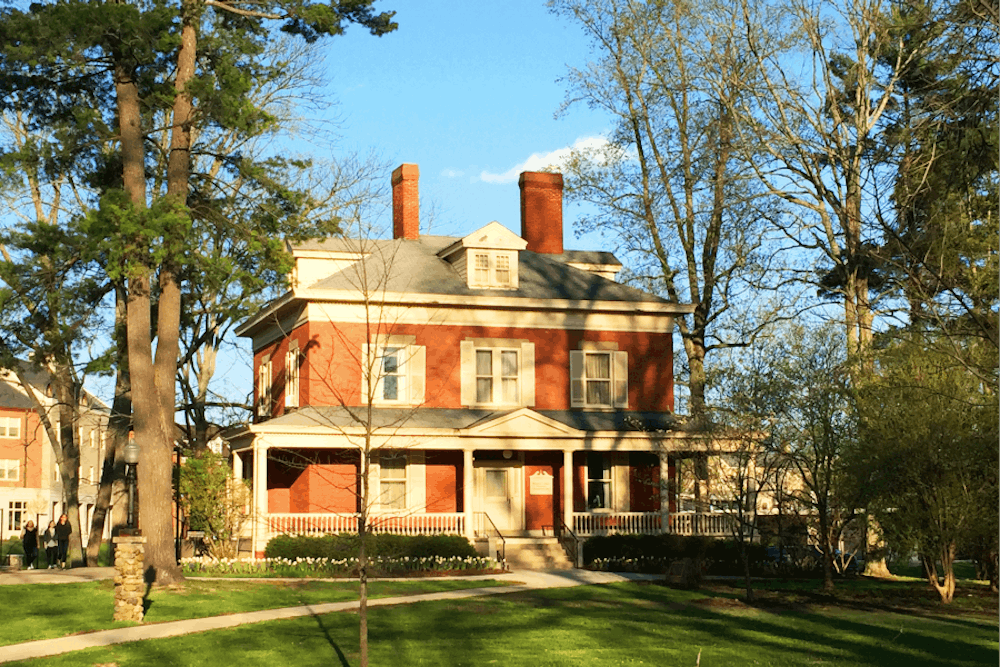Photo by James Steinbauer, Editorial Editor
The following piece, written by the editorial editors, reflects the majority opinion of the editorial board.
In the corner of a second-floor guest room in Patterson Place, home to the Western College Alumnae Association and its corresponding museum, endures the desk on which Harriet Beecher Stow penned a majority of "Uncle Tom's Cabin."
The fate of this desk, along with other historic pieces of furniture and paintings from the Western College for Women, is now unknown, as Miami University plans to demolish the museum and replace it with a new residence hall.
The cost of renovating the museum - which is in aging condition - was estimated to be around $500,000. A considerable cost that, according to Vice President for Finance and Business Services David Creamer, would be put on Miami students. Instead, the university, which is already $656 million in debt, is planning a new resident hall project with an estimated cost of $27 million.
Miami seems eager to partake in a collegiate campus arms race to erect new, modern buildings in order to create growth. Some of these, such as Western Campus' three new residence halls that run on clean, geothermal energy, have been for the better.
However, the cost of modernizing a college campus with unnecessary ham-fisted architectural moves is more than just a lump sum of money, but the university's cherished history.
This has been recognized throughout the last few weeks, as students and faculty have voiced their anger at the ruin of Bishop Woods.
It is important to note that students do not often visit Patterson Place. To most, the building is nothing more than a picturesque scene - a beautiful old house tucked into a wooded area behind charming stone bridges.
But then again, students do not visit other historic sites such as the Lorenzo Langstroth Cottage on Patterson Avenue, just a few yards from Patterson Place, or the McGuffy Museum on Spring Street - both valuable and representative of Miami's rich history. It would appear that the only thing preventing the university from tearing down these buildings and replacing them with a more "useful" hall is their protection by the Ohio Historical Society.
One of Miami's largest appeals to incoming first-years is its history. The historic places and spaces on campus are regularly used as talking points during Make It Miami tours and were boasted during the recent 50th anniversary of Freedom Summer - the 1964 collection of more than 800 volunteers at the Western College to train and prepare African American voters for registration in Mississippi.
Miami has long capitalized on the history of Freedom Summer - an event that, at the time, was single-mindedly opposed by the university. The idea that Miami would conveniently opt to demolish a significant piece of Western College history, just months after the anniversary, is asinine.
It is Miami's job as caretakers of Western Campus to preserve its history. This is at least a start to making up for Miami's enmities toward the Western College in the past.
Miami should make it a habit of working with what they already have. Build around the history, like urban campuses such as the University of Cincinnati have done. Don't just pick one spot and destroy it.

